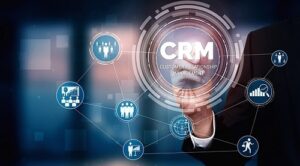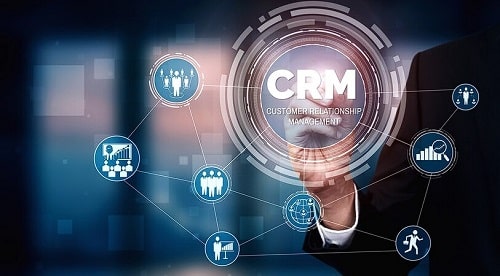Nonprofit organizations rely on donor relationships to survive and thrive. But building and maintaining those relationships can be challenging. That’s where customer relationship management (CRM) comes in. CRM is a powerful tool that can help nonprofits keep track of their donors, better understand their needs and preferences, and ultimately strengthen those relationships. In this article, we’ll take a closer look at CRM for nonprofits and explore how it can be used to build stronger donor relationships.
What is CRM?
Customer relationship management (CRM) is a strategy that organizations use to manage interactions with customers or donors. CRM software helps organizations to streamline and automate many of the tasks associated with managing customer relationships. This can include tracking customer interactions, analyzing customer data, and managing customer information.
Why is CRM important for nonprofits?
Nonprofits rely on donor relationships to achieve their goals. Donors are often the primary source of funding for nonprofit organizations. Building and maintaining strong donor relationships is critical to the success of these organizations.
CRM can help nonprofits to:
- Keep track of donor interactions and preferences
- Analyze donor data to identify trends and patterns
- Segment donors based on their interests and giving history
- Customize outreach and communications to meet the needs of individual donors
- Streamline fundraising efforts and increase donor retention rates
How can nonprofits use CRM to build stronger donor relationships?
There are several ways that nonprofits can use CRM to build stronger donor relationships. Here are a few examples:
1. Keep track of donor interactions and preferences
CRM software can help nonprofits to keep track of all interactions with donors, including emails, phone calls, and meetings. This information can be used to better understand donor preferences and interests, which can help to tailor future communications and outreach efforts.
2. Analyze donor data to identify trends and patterns
CRM software can also help nonprofits to analyze donor data to identify trends and patterns. For example, nonprofits can use CRM to identify donors who have given multiple times in the past, or donors who have given large gifts. This information can be used to tailor outreach efforts to these donors, such as personalized emails or phone calls.
3. Segment donors based on their interests and giving history
CRM software can also help nonprofits to segment donors based on their interests and giving history. For example, a nonprofit might create segments for donors who have given to a specific program or campaign. This information can be used to customize outreach efforts and communications to meet the needs and interests of individual donors.
4. Customize outreach and communications to meet the needs of individual donors
CRM software can also be used to customize outreach and communications to meet the needs of individual donors. For example, nonprofits can use CRM to send personalized emails or mailings to donors, based on their interests and giving history.
5. Streamline fundraising efforts and increase donor retention rates
Finally, CRM software can help nonprofits to streamline fundraising efforts and increase donor retention rates. By keeping track of donor interactions and preferences, nonprofits can more effectively target their fundraising efforts, which can lead to increased donor retention rates.
What are the benefits of using CRM for nonprofits?
There are several benefits of using CRM for nonprofits, including:
- Better donor engagement and retention
- More effective fundraising efforts
- Improved communication with donors
- Increased donor satisfaction and loyalty
- More efficient and streamlined donor management
Conclusion
CRM is a powerful tool that can help nonprofits to build and maintain strong donor relationships. By keeping track of donor interactions and preferences, analyzing donor data, and customizing outreach and communications, nonprofits can increase donor engagement and retention, streamline fundraising efforts, and improve communication with donors. If you’re a nonprofit organization looking to strengthen your donor relationships, CRM is definitely worth considering.
FAQs
1. What is CRM, and how does it work?
CRM stands for customer relationship management. It is a strategy that organizations use to manage interactions with customers or donors. CRM software helps organizations to streamline and automate many of the tasks associated with managing customer relationships. This can include tracking customer interactions, analyzing customer data, and managing customer information. CRM works by collecting data about customers or donors and using that data to better understand their needs and preferences. This information can then be used to tailor outreach and communication efforts, which can lead to stronger relationships and increased engagement.
2. What are some common features of CRM software?
- Contact management: This feature allows users to store and manage customer or donor contact information.
- Sales management: This feature allows users to track sales or donations and analyze sales data.
- Marketing automation: This feature allows users to automate marketing tasks, such as email campaigns and social media outreach.
- Customer service and support: This feature allows users to manage customer service interactions and track customer support tickets.
- Analytics and reporting: This feature allows users to analyze customer or donor data and generate reports on key metrics.
3. How can nonprofits choose the right CRM software for their needs?
Choosing the right CRM software can be a daunting task, but there are several factors that nonprofits should consider when making their choice. These include:
- Budget: CRM software can vary widely in terms of cost, so nonprofits should consider their budget when choosing a solution.
- Features: Nonprofits should consider the features they need most, such as contact management, sales management, and marketing automation.
- Integration: Nonprofits should consider whether the CRM software integrates with other tools they use, such as fundraising software or email marketing software.
- Ease of use: Nonprofits should consider whether the CRM software is easy to use and whether it requires any specialized training or technical expertise.
- Support: Nonprofits should consider the level of support offered by the CRM software provider, including training, customer service, and technical support.
4. How can nonprofits ensure that they use CRM effectively?
Using CRM effectively requires more than just purchasing and implementing the software. Nonprofits should also:
- Set clear goals: Nonprofits should set clear goals for what they want to achieve with CRM and how they will measure success.
- Train staff: Nonprofits should provide training for staff on how to use the CRM software effectively.
- Use data effectively: Nonprofits should use the data collected by the CRM software to inform their outreach and communication efforts.
- Regularly evaluate and adjust: Nonprofits should regularly evaluate the effectiveness of their CRM strategy and make adjustments as needed.
5. What are some common challenges nonprofits face when using CRM?
Some common challenges that nonprofits face when using CRM include:
- Limited resources: Nonprofits often have limited resources to invest in CRM, which can make it challenging to implement and maintain.
- Staff buy-in: Staff may be resistant to using new technology or may not see the value in using CRM.
- Data quality: Nonprofits may struggle to collect and maintain accurate and complete data on donors.
- Integration: Nonprofits may struggle to integrate CRM with other tools they use, such as fundraising software or email marketing software.
6. How can nonprofits overcome these challenges?
Nonprofits can overcome these challenges by:
- Prioritizing resources: Nonprofits should prioritize resources to invest in CRM, even if it means making trade-offs in other areas.
- Building staff buy-in: Nonprofits should involve staff in the decision-making process when choosing a CRM solution and provide training and support to ensure staff are comfortable using the software.
- Focusing on data quality: Nonprofits should focus on collecting and maintaining accurate and complete data on donors, and consider using data

